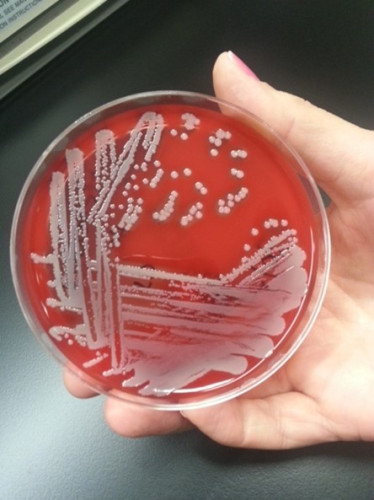
Our primary defence against infection is intact skin. When it is breached, S. aureus can invade and cause serious infection.
Once infection is established, spread to surrounding sites or via the bloodstream may occur.
Invasive medical devices allow direct entry into a normally sterile site and local and/or disseminated infection can be developed. Bloodstream infections, called bacteraemia (bacteria in the blood), caused by S. aureus are very serious and typically require admission to hospital for treatment of the infection. These infections can havenegative outcomes including death.
HA-SAB infections are potentially preventable using infection prevention strategies such as good hand hygiene practices, the use of an aseptic technique when placing and managing invasive medical devices or caring for wounds, skin antisepsis before invasive procedures, effective antimicrobial stewardship and regular infection surveillance.
HA-SAB infection surveillance
Continuous surveillance of healthcare-associated infections, including HA-SAB, is an important activity to make care safer and guide improvement in clinical practice.
Te Tāhū Hauora Health Quality & Safety Commission (Te Tāhū Hauora) monitors the rate of HA-SAB per 1,000 inpatient days as the outcome marker for the Hand Hygiene New Zealand programme.
Since 1 July 2022, public hospitals have also submitted HA-SAB source data.
The first 24 months of HA-SAB surveillance results (1 July 2022 to 30 June 2024) are available here.
Reducing infections associated with vascular devices
The infection prevention and control team at Te Tāhū Hauora is currently developing a national quality improvement initiative aimed at reducing infections associated with peripheral intravenous catheters. Visit this page to read more about peripheral intravenous catheters.
Related resources
Guide: Surveillance of healthcare-associated Staphylococcus aureus bacteraemia
Journal article: Sources of healthcare-associated Staphylococcus aureus bacteraemia in New Zealand acute hospitals (October 2022)
Resource: Healthcare-associated infection Severity Assessment Code (SAC) examples 2022–23
Poster: HA-SAB Engagement using ThoughtExchange (PDF)
Poster: HA-SAB What are we going to do about increasing rates (PDF)

